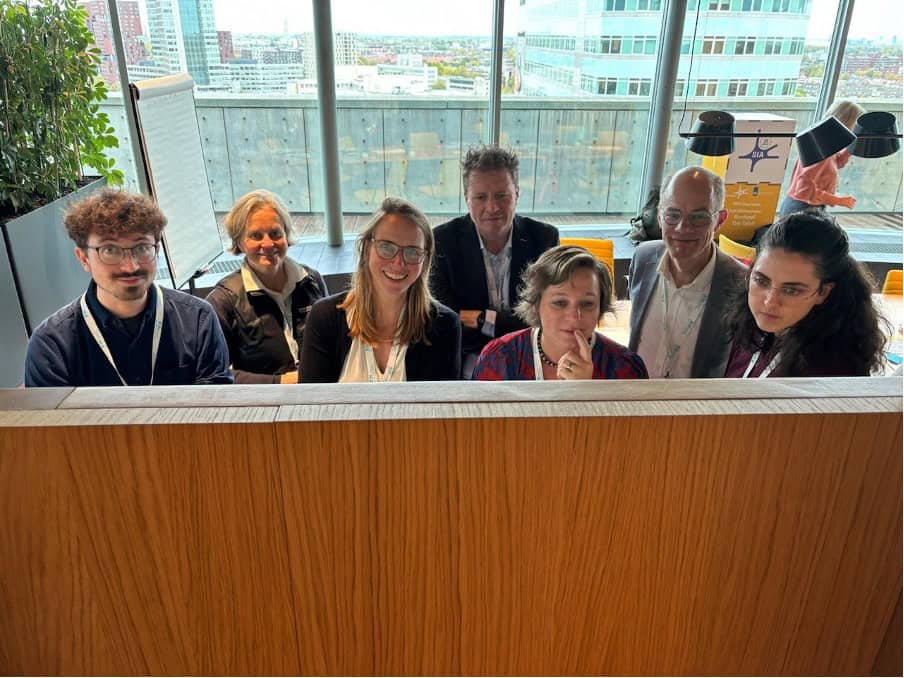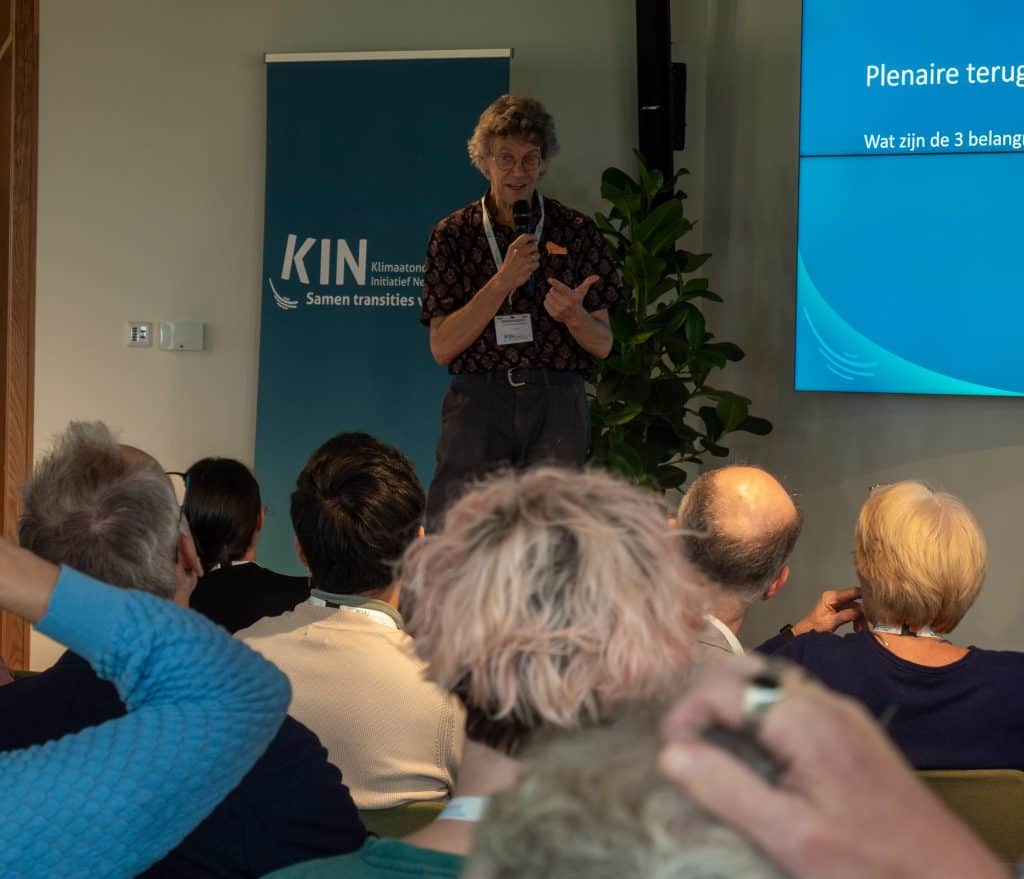The third and final Make-aton of this year has taken place, and this time we take a look at the process through the eyes of the challenge leaders and the core team. In this blog, they reflect on their experiences, challenges, and highlights of the process.
Curious for a broader perspective? Also read the general reflection on Make-aton 3 or the blog by Chantal Oudkerk Pool, IenW project leader, who previously shared her experiences.
What are Make-atons and who is responsible for what?
Make-atons are intensive working sessions where policymakers, scientists, and experts collaborate to develop adaptation pathways for a climate-resilient Netherlands. The goal of this series of Make-atons is to adopt a ‘maker’ mindset (Make + hackaton) to create concrete solutions for complex issues within the National Climate Adaptation Strategy (NAS). In total, there are 15 adaptation pathways to outline under the NAS, and we addressed 5 with 3 Make-atons: (1) water management, (2) energy, ICT, and vital infrastructure, (3) cultural heritage, (4) health, and (5) people/goods infrastructure.
Each theme includes multiple members and is led by a facilitator, a core team member, and a challenge leader. The core team played an important role during the Make-atons in guiding the sessions and structuring input from various experts. Additionally, there were challenge leaders specifically responsible for different themes. The facilitators (not interviewed in this blog but essential!) guided the discussions within the groups on the day itself.

Introducing the team: who was involved?
In total, there were 5 facilitators, 5 core team members, and 6 challenge leaders (one group had two). For this blog, we interviewed 2 challenge leaders and 2 core team members, each from a different theme.
Anne-Marie Hitipeuw, the challenge leader for ‘water management’, shared that she, along with Chantal, Michiel, and other initiators, took the first steps to organise the Make-atons. “From the beginning, it was exciting because it wasn’t clear if the approach we’d chosen would work.”
Stijn Verwoest, challenge leader for ‘energy infrastructure’, emphasised the importance of bringing the right people together. “We work from the Ministry of Climate and Green Growth on energy infrastructure, but the goal was to ensure ICT and other vital sectors were well integrated into the NAS.”
Marjolijn Haasnoot, core team member and expert in ‘cultural heritage’, also played a key role. For her, it was inspiring to see a diverse group of scientists and practitioners willing to contribute to adaptation. “Cultural heritage was a new topic for adaptation pathways. We really had to start from scratch.”
Tom van der Voorn, who was on the core team for the ‘health’ theme, helped develop the methodology alongside Robbert Biesbroek and Marjolijn. “We established a protocol for creating adaptation pathways, working both forward-looking and backward-looking in expert sessions. The PBL’s future scenarios guided this process. This session allowed us to gather as much input as possible.”
How did the process unfold?
The first session was a challenge, especially since the material was new for many participants, Anne-Marie Hitipeuw noted. “The knowledge level in the group wasn’t uniform, which made developing a methodology challenging. But it’s impressive that we managed to develop one method in such a short time.”
Stijn Verwoest highlighted that the speed at which decisions had to be made was challenging but also helped maintain focus. “We were forced to make quick decisions and sharp choices about what to include. This prevented us from getting bogged down in endless discussions.”
Marjolijn Haasnoot added that working in a ‘pressure cooker’ was challenging but effective. “Time was limited, and we wanted to substantiate the adaptation pathways well. We achieved a lot in a short time, though there’s still more to do.”
Tom van der Voorn added that developing the health theme was challenging due to uncertainty about the effectiveness of measures. “Health is a broad theme, from heat stress to pollen allergies. It’s difficult to substantiate that comprehensively in such a short time. This requires more time than we had.”//

Highlights and favourite moments
The third Make-aton focused on connecting the adaptation pathways for different themes. According to Tom van der Voorn, it was remarkable to see the methodology come to life. “People had to think about the long term, which is difficult for many. But valuable insights emerged precisely through this dialogue.”
Marjolijn Haasnoot also highlighted the power of collaboration. “My favourite moment was seeing people from very different backgrounds bring their expertise together. We planted a seed for a new theme (cultural heritage), which felt very meaningful.”
Anne-Marie recalled a special moment during the evaluation of the water management adaptation pathway. “One of my favourite moments was with experts from various knowledge institutions and colleagues. We discussed long-term water management adaptation measures in policy for ‘freshwater and water safety’. We really bridged knowledge and policy.”
Challenges
While there were many success moments, the process also had its challenges. Stijn Verwoest mentioned the complexity of infrastructure issues as an obstacle. “Responsibilities are often fragmented, and it was challenging to get everyone on the same page. Having a fixed team helps, but there are many interests involved.”
For Marjolijn Haasnoot, limited time was one of the biggest obstacles. “You work on topics that actually need much more depth, but there isn’t time for that now. Still, we have to quickly sketch a picture, which can then guide further depth.”
Tom van der Voorn also felt the pressure to deliver meaningful adaptation pathways in a short time. He views the entire trajectory as an experiment to demonstrate whether policymakers, scientists, and experts can develop concrete solutions for the complex issue of climate adaptation, where much is uncertain, in a short time.

Hopeful conclusion
Despite the challenges, the challenge leaders and the core team are hopeful for the future. The next steps are also clear. Anne-Marie Hitipeuw hopes that future steps will see even more cross-pollination between different themes. “We took a good step in Make-aton 3, but there’s still work to be done.”
Stijn Verwoest is satisfied with the results but hopes for more clarity in the future on how the adaptation pathways will be applied in practice. “I see the adaptation pathways as an organisational principle, but there’s still work to embed them properly.”
Marjolijn Haasnoot concludes with the hope that the results are well integrated into a manageable report. “There are many options and opportunities, but also boundaries. It’s important to understand those boundaries and make the right choices. These exploratory pathways help to gain that insight.”
With this third Make-aton, a significant part of the process comes to an end, but the journey towards a climate-resilient Netherlands is only just beginning. The coming months will focus on further validation and implementation of the adaptation pathways. The participants look forward to taking on this challenge.
Want to read more about the Make-atons? Check out the general reflection on the third Make-aton or read the experiences of project leader Chantal Oudkerk Pool.

